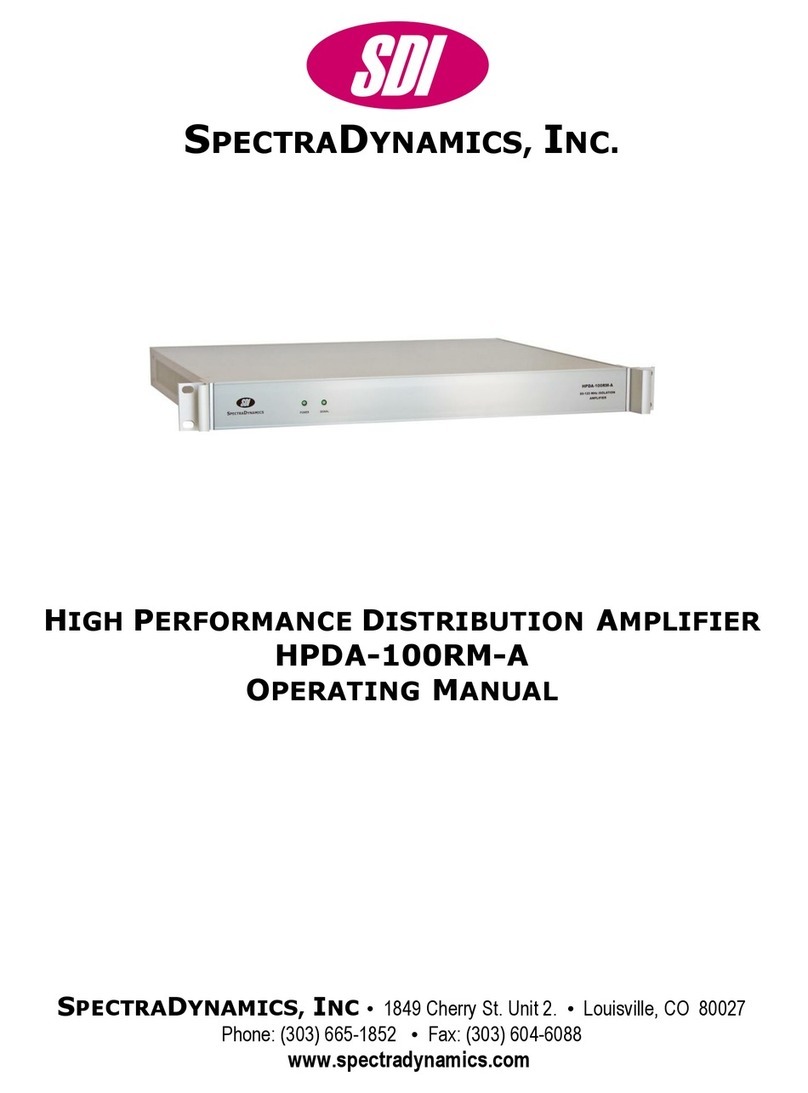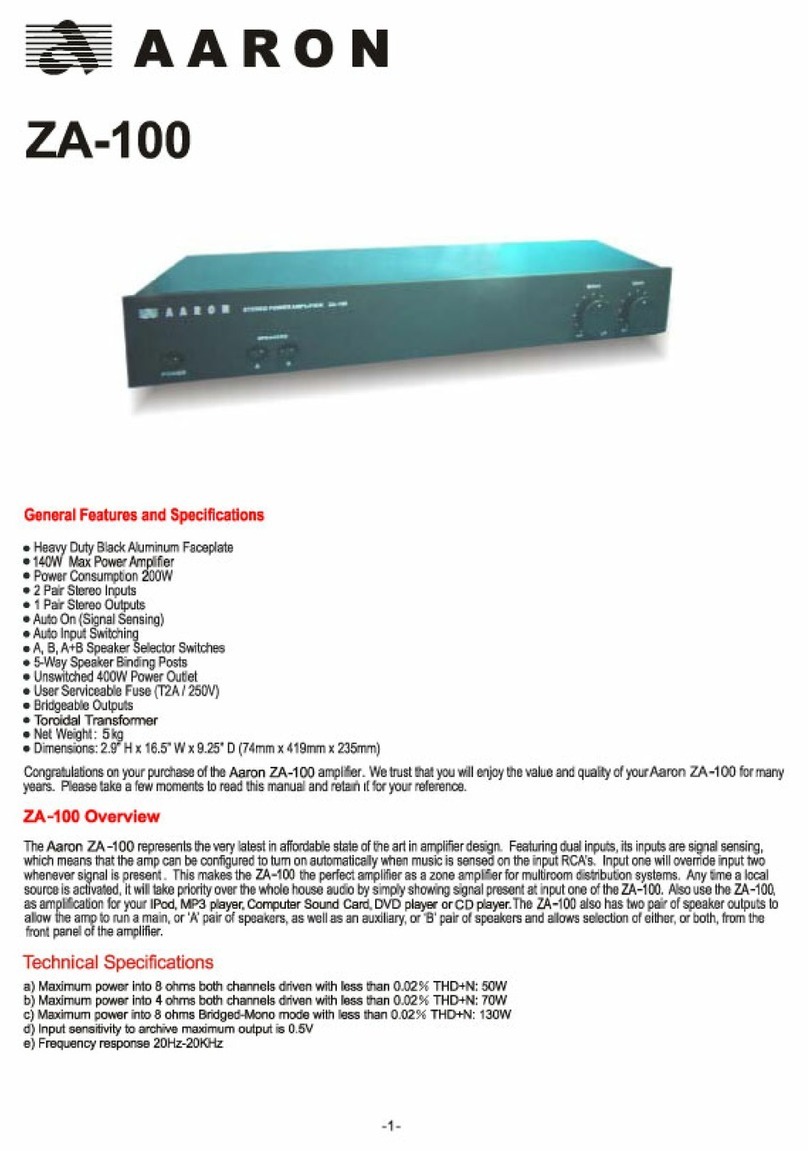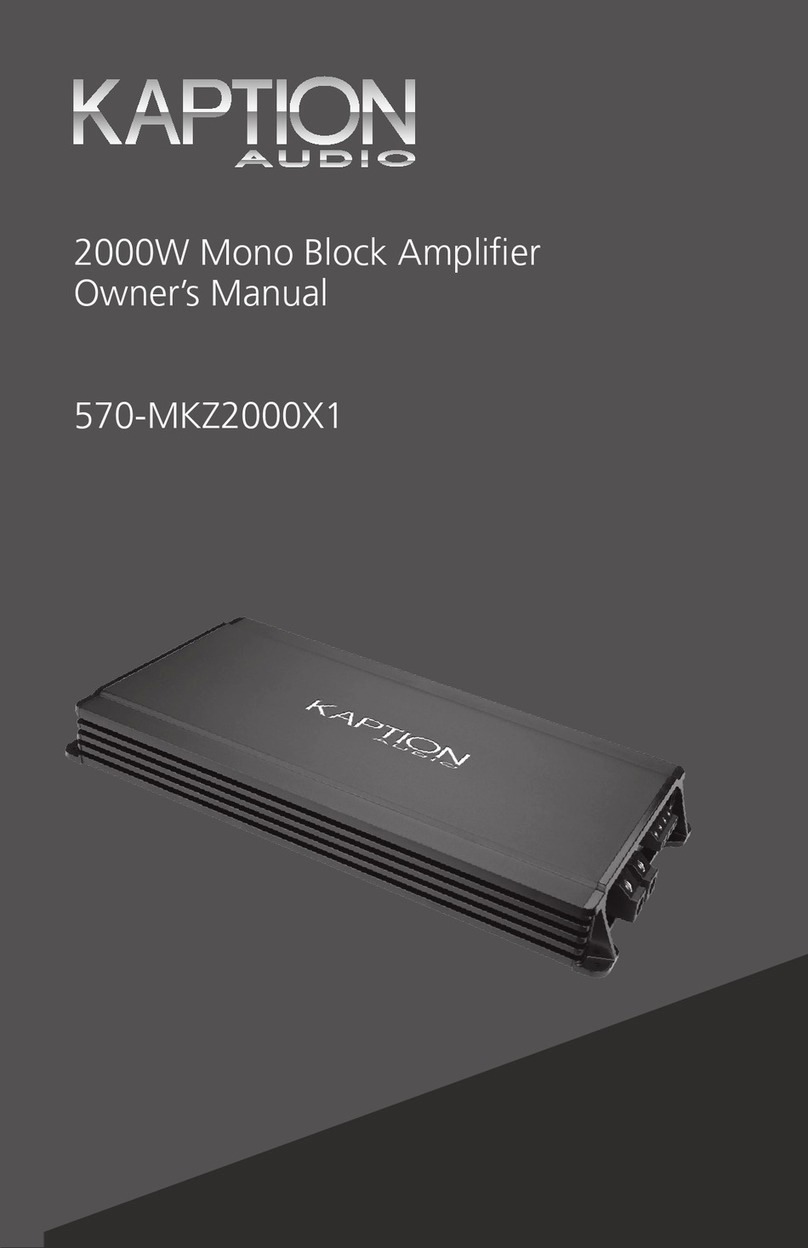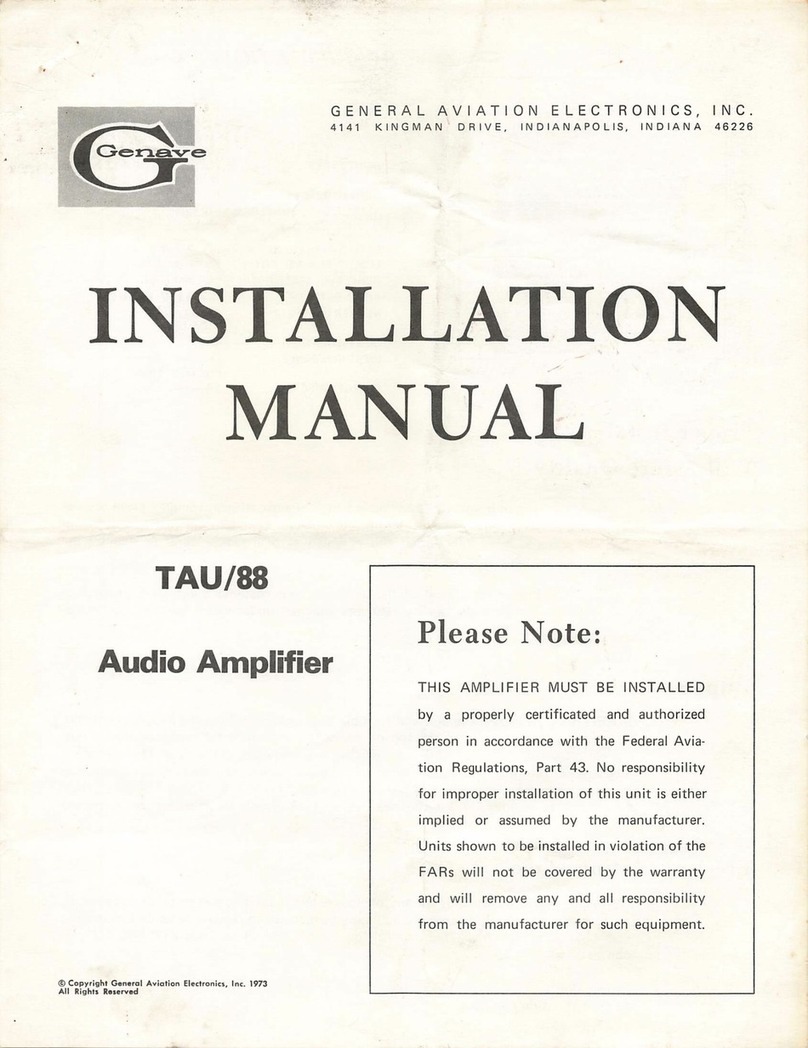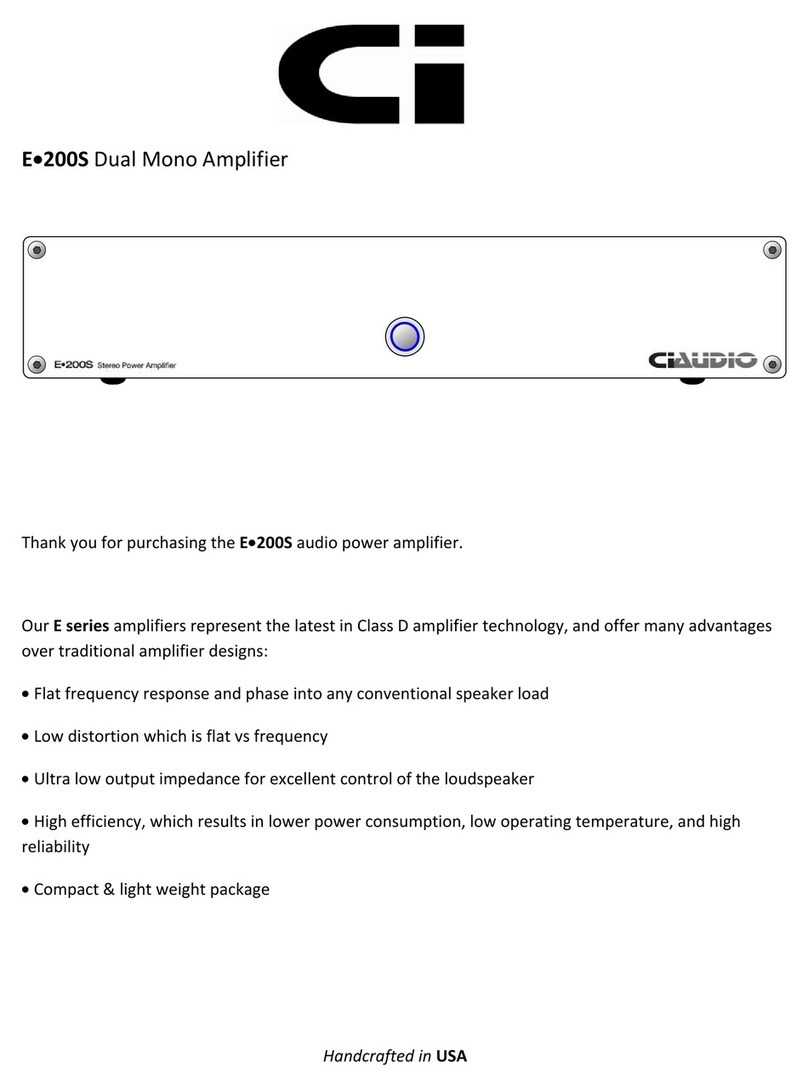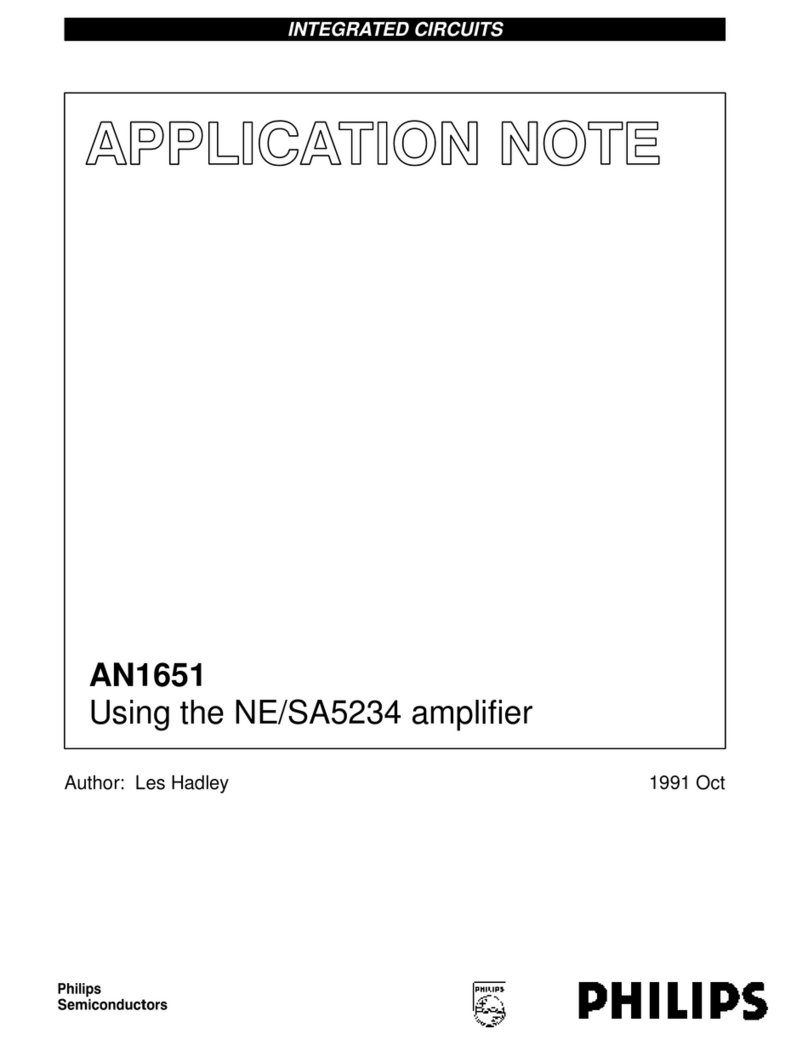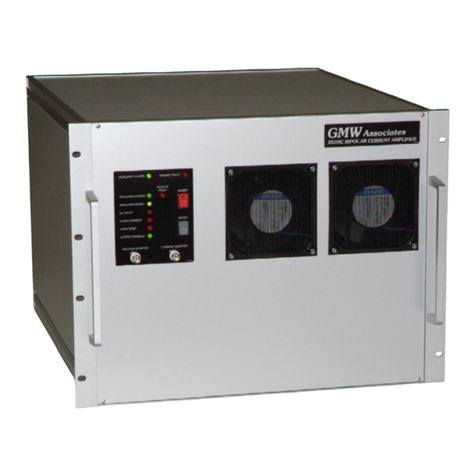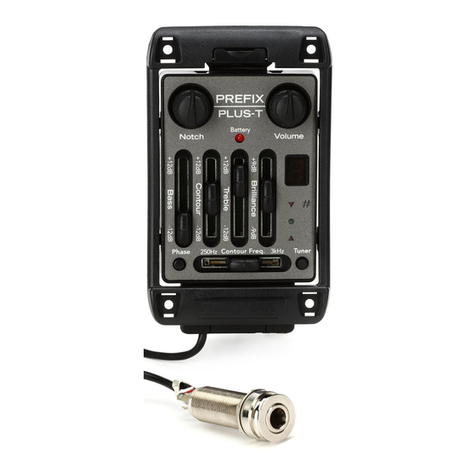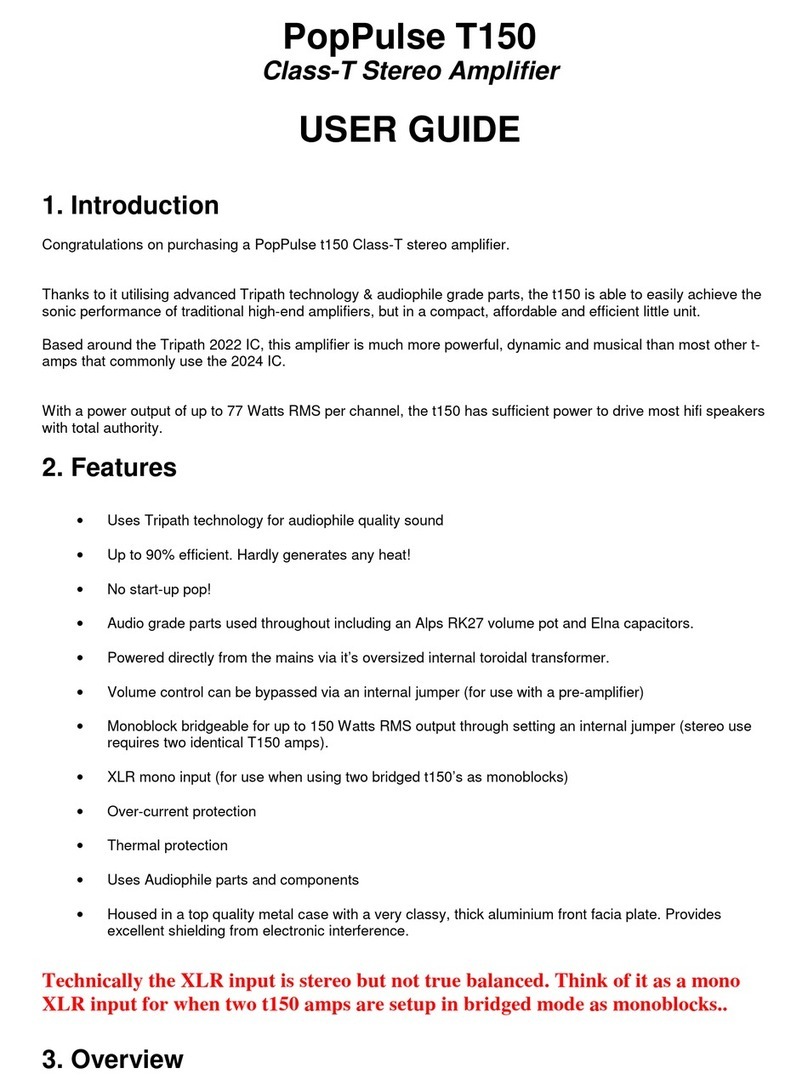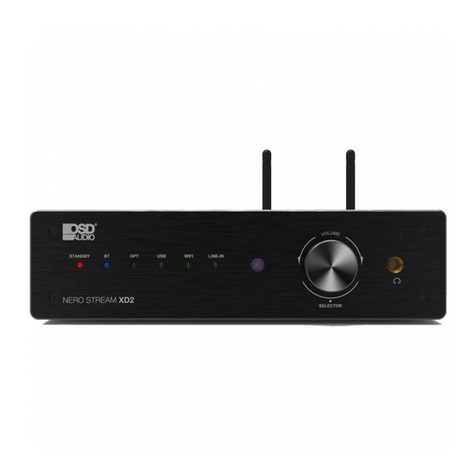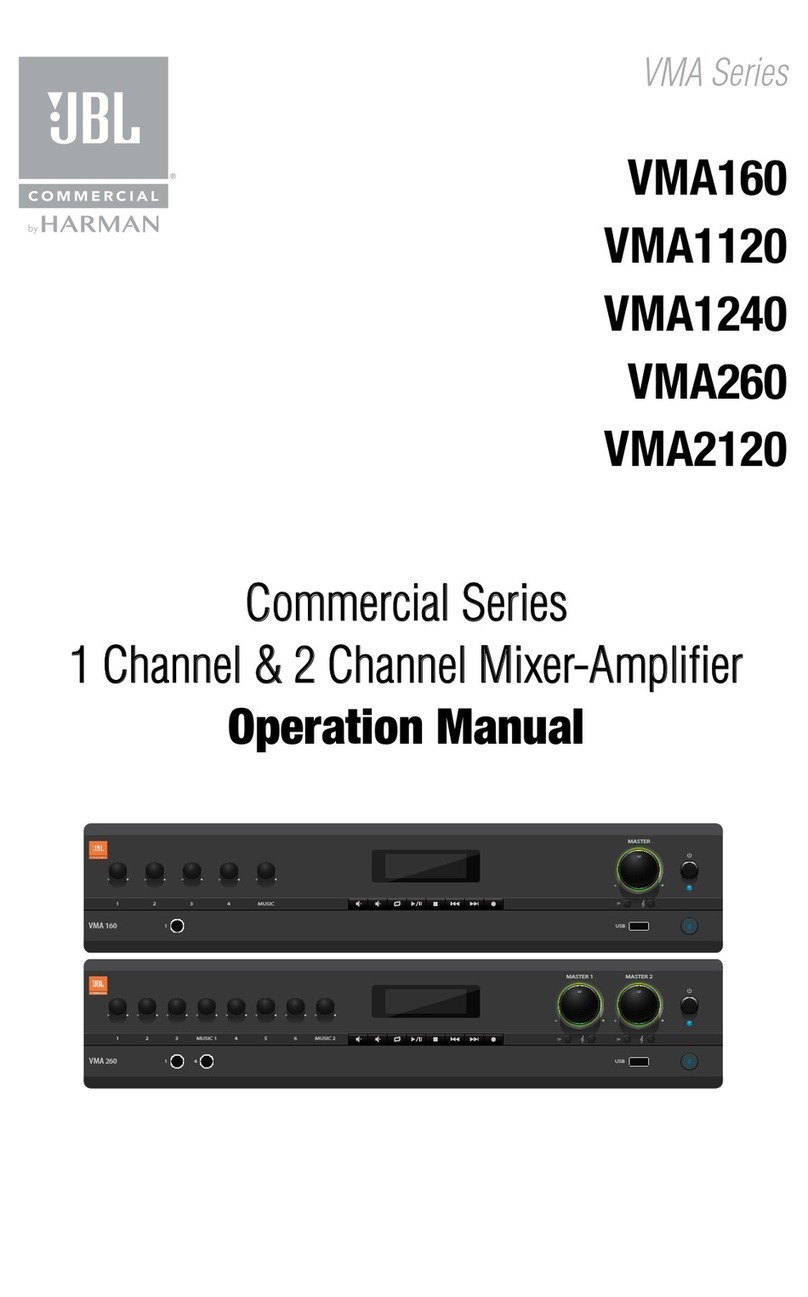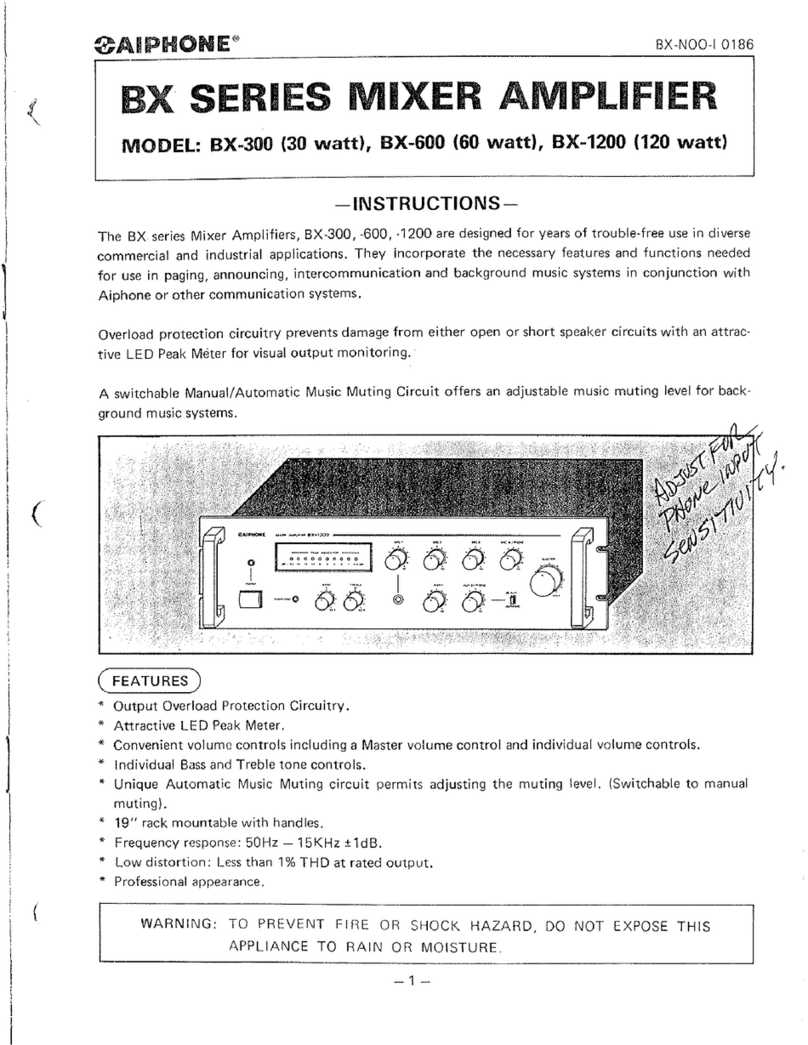OT Bioelettronica EMG-USB2 User manual

User manual v 2.0
EMG-USB2
Multichannel Bioelectrical
Signal Amplifier
Read this manual carefully before using the EMG-USB2 amplifier.

EMG-USB2 User manual v.2.0
pag. 2/31

EMG-USB2 User manual v.2.0
pag. 3/31
INDEX
1. GENERAL DESCRIPTION ......................................................................................pag. 5
2. EMG-USB2 KIT CONTENT .....................................................................................pag. 6
3. END USERS ...........................................................................................................pag. 6
Contraindications ............................................................................................pag. 6
Side effects ....................................................................................................pag. 6
4. SAFETY CAUTIONS AND OTHER WARNINGS ......................................................pag. 7
5. SYMBOLS USED ON EMG-USB2 AND IN THE USER MANUAL .............................pag. 9
6. TECHNICAL SPECIFICATIONS ..............................................................................pag. 10
7. DETAILED DESCRIPTION......................................................................................pag. 12
FRONT PANEL
.............................................................................................pag. 12
Single input connectors: IN 1÷4 .............................................................pag. 12
Multiple input connectors: MULTIPLE IN 1÷3 ..........................................pag. 13
PATIENT REF connector ........................................................................pag. 13
DRL IN connector .................................................................................pag. 13
DRL OUT connector ..............................................................................pag. 14
Liquid crystal display and keypad............................................................pag. 14
REAR PANEL
...............................................................................................pag. 15
Power supply socket ..............................................................................pag. 15
Power supply switch ..............................................................................pag. 15
Fuse box...............................................................................................pag. 16
Fan.......................................................................................................pag. 16
USB connector ......................................................................................pag. 17
AUXILIARY INPUTS connectors ..............................................................pag. 17
TRIGGER connector ...............................................................................pag. 17
ANALOG OUTPUT connector...................................................................pag. 17
8. USE OF EMG-USB2 ................................................................................................pag. 18
EMG-USB2 CONFIGURATION
....................................................................pag. 18
Detection Mode .....................................................................................pag. 18
Amplification gain ..................................................................................pag. 20
High pass and Low pass filters ...............................................................pag. 20
Analog out setting .................................................................................pag. 21
Global Settings ......................................................................................pag. 21
Backlight management ..........................................................................pag. 22
Firmware upgrade .................................................................................pag. 22
CONNECTION SETUP
..................................................................................pag. 23
PATIENT CONNECTION
..............................................................................pag. 24
9. TROUBLESHOOTING ............................................................................................pag. 27
10. EMG-USB2 MAINTENANCE AND STORAGE ........................................................pag. 28
11. TECHNICAL CHARACTERISTICS.........................................................................pag. 29
12. WARRANTY ........................................................................................................pag. 30
Warranty conditions ........................................................................................pag. 30

EMG-USB2 User manual v.2.0
pag. 4/31

EMG-USB2 User manual v.2.0
pag. 5/31
1.
GENERAL DESCRIPTION
The EMG-USB2 is a multichannel amplifier for bioelectrical signals. It can detect surface
electromyographic (sEMG) signals, intramuscular electromyographic (iEMG) signals,
electroencephalographic (EEG) signals and electrocardiographic (ECG) signals.
The EMG-USB2 allows the detection and recording of the electric signals generated by human
body. The signals acquired by the instrument are amplified, filtered, digitally converted and then
transferred to a PC, via an USB interface, for real-time visualization and storage. A freeware
software called OT BioLab has been designed by OT Bioelettronica and is available for download
on the website www.otbioelettronica.it, under the download page.
The EMG-USB2 is a research instrument designed for clinical research carried out by qualified
researchers. EMG-USB2 has been developed by the cooperation between OT Bioelettronica and
EMG & MOTOR UNIT LABORATORY of Aalborg University.
The EMG-USB2 is a modular system. It can amplify from 16 up to 256 bioelectrical channels, in
modules of 16 channels per board installed. The number of amplifier boards installed in the system
determines the total number of channels.
Several configurations of electrodes are possible by means of a number of cable adapters that
allow splitting the 7 amplifier inputs (16 channels for inputs: IN1, IN2, IN3 and IN4; 64 channels
for inputs: MULTIPLE IN1, MULTIPLEIN2 and MULTIPLE IN3).
EMG-USB2 allow to acquire, in any configuration, 16 additional signals on the auxiliary inputs
(AUX-IN). The signals can be generated by others amplifiers (e.g. force, torque, angle, position or
trigger signals) that do not need an optical insulation.
Custom amplification boards can be realized on user request to allow acquisition of other biological
and non-biological signals (MMG, force, etc.).
The EMG-USB2 instrument is completely safe for the patient. The safety is achieved by means of
medical grade electrical insulation of all the circuitry connected to the patient.
This user manual refers to all hardware versions of the instrument.

EMG-USB2 User manual v.2.0
pag. 6/31
2. EMG-USB KIT CONTENT
1 multichannel amplifier EMG-USB2
1 to 7 cable adapters to connect electrodes to the amplifier (depending on the number of
channels installed into the amplifier and on the customer request);
1 conductive cream package;
3 reference straps;
Arrays and matrix of electrodes of different sizes, depending on the customer request;
1 EMG-USB2 user manual.
3. END USER
EMG-USB2 multichannel amplifier allows invasive and non invasive recording of biopotentials
(iEMG, sEMG, EEG, ECG) detected by superficial and intramuscular electrode.
In case of sEMG, EEG and ECG recordings the end user must be familiar with the technique and
received a proper training in EMG or EEG or ECG detection and interpretation.
The detection of iEMG signals is subjected to the insertion of needles or wires into the muscle and
must be supervised by trained medical staff.
Contraindications
EMG-USB2 has no particular contraindications when used jointly with personal computers,
provided that all the electrical devices connected to it and the power line comply with safety rules
and standards concerning grounding and leakage currents.
Side effects
In case of sEMG, EEG or ECG, no significant side effects are known. The materials used for
manufacturing all the parts in contact with the patient are biocompatible. Possible slight cutaneous
allergic reactions (e.g. skin reddening) are reduced to a minimum during short duration of
bioelectrical signal acquisitions.
In case of iEMG, the needles or wires used to detect the signals must be sterilized. No significant
side effects are known.

EMG-USB2 User manual v.2.0
pag. 7/31
4. SAFETY CAUTIONS AND OTHER WARNINGS
The use of the multichannel EMG-USB2 amplifier is absolutely forbidden in the following
conditions:
While other monitoring devices are in use with the patient.
While electro surgery equipment, short waves or microwaves therapy devices are used.
By mentally impaired people.
Whenever the equipment is damaged.
In proximity of inflammable substances (especially inflammable liquids and gases) or in
environments with high concentration of oxygen.
On patients carrying life-supporting equipment that might be adversely affected by
electromagnetic interferences, such as pacemakers, etc.
The following cautions should be observed:
The detection of iEMG signals must be supervised by trained medical staff.
Only use electrodes supplied by the manufacturer: EMG-USB2 is guaranteed to achieve tested
performance only if used with electrodes supplied by the manufacturer.
Contact the manufacturer immediately if extraneous materials permeate into the device
(liquids, powders, etc.). In case of hard shocks suffered by the EMG-USB2 (like a drop to the
floor, etc.), verify that no crack or any other kind of damage of the box resulted from the
shock. In case of doubt, please contact the manufacturer.
The EMG-USB2 is subject to electromagnetic interference that is not dangerous for the patient
(such as electrostatic or electromagnetic interference generated by electrical motors and other
sources). This interference may affect the measurements of the physiological variables derived
from the EMG or EEG signals. These measurements are not meant to be used for diagnostic
purposes, and thus these signal alterations cannot be dangerous for the patient, please always
take into account the presence of noise in your signal processing tasks and evaluations.
Before making any measurement, it is mandatory to check the quality of the grounding of the
power line to which the EMG-USB2 is connected. The use of electrical devices with
grounding connections not compliant with safety standards represents a high risk
for the patient and the operator.
The connection between EMG-USB2 and other electrical devices (e.g. a PC) must be done in
compliance with the European standard EN 60601-1-1 on medical devices.

EMG-USB2 User manual v.2.0
pag. 8/31
Always use the EMG-USB2 with a PC manufactured in compliance with the European standards
EN 60950 (safety standard for information technology devices), EN 55022 (EMC standard) and
EN 55024 (immunity standard).
Electrical motors and other electrical devices (relay, remote control switch, neon lights, etc.)
near the EMG-USB2 electromyograph can be a source of electromagnetic interference that
disturbs the amplifier. The presence of such electromagnetic fields is not dangerous for the
patient, but can alter the bioelectrical signals and cause unreliable measurements.
The use of the EMG-USB2 is restricted to skilled personnel.
Incorrect measurements can arise when unskilled personnel use the device in presence of
strong sources electromagnetic interference (e.g. strong electromagnetic fields). The presence
of interference in the signals is easily recognised by skilled personnel.
EMG-USB2 is not designed to be portable equipment. Should it be necessary to move the EMG-
USB2 electromyograph, it must be properly packaged to avoid typical vibrations and shocks
arising from transportations. Vibrations could cause the release of metallic particles inside the
appliance, such as screws, nuts and bolts, that could compromise the safety of the patient and
the integrity of the appliance.

EMG-USB2 User manual v.2.0
pag. 9/31
5. SYMBOLS USED ON EMG-USB2 AND IN THE USER MANUAL
Class BF for circuitry applied to patient.
Read carefully the instruction remarks before use.
Dangerous voltage level, power line voltage.
Multifunction keys to select the parameter to be modified.
Multifunction keys to modify the selected parameter value.
Input selection keys, indicated as Previous INPUT and Next INPUT. They can be used to
select the group of channels related to an IN and a MULTIPLE IN connector.
Multifunction key to enter the selected parameter value.
Signals input.
Signals output.
I O
Power on (I): switch on power line voltage supply.
Power off (O): switch off power line voltage supply.

EMG-USB2 User manual v.2.0
pag. 10/31
6. TECHNICAL SPECIFICATIONS
EMG-USB2 is an optically and galvanically insulated device designed to guarantee a high safety
level for the patient and the operator in all operating conditions. The optical and galvanic
insulation separates the circuitry connected to the patient from the circuitry connected to external
non-medical devices, such as the PC used for data acquisition and user interface. An embedded
circuitry, called Driven Right Leg (DRL) circuitry, is available to reduce common mode voltage
noise arising from electrical interference from the power line. The DRL is particularly useful in
monopolar acquisition mode.
Table 1 shows an example of possible probes configurations with the available versions of the
EMG-USB2.
Device configuration
Example of probes configuration
256 channels
four 16 channel probes and three 64 channel probes
128 channels
four 16 channel probes and one 64 channel probe
64 channels
four 16 channel probes
16 channels
one 16 channel probe
TAB. 1: Examples of probes configurations with EMG-USB2 amplifier.
As shown in the examples, it is possible to simultaneously acquire signals with different probes.
This is necessary when signals from different muscles need to be recorded at the same time or
when EEG and EMG has to be recorded together.
Using the front panel keypad, it is possible to assign a gain value to each probe. When the signals
are detected from different sources, it can be necessary to set different gain levels for each probe
to exploit the full range of the A/D converter and obtain the best possible recording of the signal.

EMG-USB2 User manual v.2.0
pag. 11/31
EMG-USB2 technical specifications are shown in TAB. 2.
Amplification channels (IN1÷4 and MULTIPLE IN 1÷3)
Selectable gain
OFF, 100, 200, 500, 1000, 2000, 5000, 10000 V/V
Selectable bandwidth
High pass filter: 3, 10, 100, 200 Hz
Low pass filter: 130, 500, 900, 4400Hz
Maximum input range
50 mVPP
Noise level referred to input
< 4 VRMS
Input impedance
> 1011
CMRR
> 95 dB
Output range
0 ÷ 5 V
Insulation voltage
4.000 VDC
Auxiliary channels (AUX-IN 1÷16)
Input range
± 5 V
Bandwidth
Channels are not filtered
Gain
0.5 V/V
Input impedance
200 kΩ
A/D converter input dynamics
0 ÷ 5 V
Data conversion
A/D converter resolution
12 bit
Data transfer to PC
USB2 interface
Selectable sample frequency
512, 2048, 4096, 10240 Hz
TAB. 2: EMG-USB2 technical specification

EMG-USB2 User manual v.2.0
pag. 12/31
7. DETAILED DESCRIPTION
FRONT PANEL
FIG. 1 shows controls, indicators and connectors present on the front panel of the EMG-USB2 and
described in the following sections.
FIG. 1: EMG-USB2 front panel
Single input connectors: IN 1÷4
Each of the single input connectors provide the input to 16 amplification channels. These inputs
allows the connection of different type of adapters. The adapters are active device that are used to
interface one or more electrode arrays or matrixes to the amplifier. For sEMG are available
different type of adapters that allow the connection of one 16-electrode array, or two 8-electrode
arrays or four 4-electrode. For a complete list of available adapters refer to the website:
www.otbioelettronica.it
BIOELETTRICAL SIGNAL AMPLIFIER
EMG-USB2
OK
IN
connectors
PREV. INPUT
NEXT INPUT
IN 1
IN 3
IN 4
IN 2
MULTIPLE IN 3
MULTIPLE IN 1
MULTIPLE IN 2
PATIENT REF
DRL OUT
DRL IN
DRL IN
connector
DRL OUT
connector
PATIENT REF
connector
Liquid crystal display
Keypad
Multiple IN
connectors

EMG-USB2 User manual v.2.0
pag. 13/31
Multiple input connectors: MULTIPLE IN 1÷3
Each of the multiple input connectors provide the input to 64 amplification channels. For sEMG it is
available one adapter for the connection of a 64 electrode matrix.
PATIENT REF connector
The
PATIENT REF
connector is used to connects the EMG-USB2 reference point of the amplifier to
the patient. The reference point must be connected to a point on the patient's body without
myoelectric activity (e.g. the ankle or the wrist) using the supplied ground strip. The strip must be
wet with water to ensure a good electric contact with the patient.
REMARK: failure in connecting this electrode prevents the correct acquisition of the EMG signal.
DRL IN connector
The
DRL IN
has a double function, it is the input of the interference reduction circuitry DRL and
one input of each EMG-USB2 amplification chain, when in
floating monopolar
mode.
In case of high levels of electromagnetic interference, it may be necessary to activate the DRL
noise reduction circuitry. To activate the DRL noise reduction circuitry a ground strip must be
connected to the patient at a point with no bioelectrical activity (wrist or ankle). Using the
provided cable, the strip must be connected to the
DRL IN
connector. An additional ground strip
must be connected at a point with no bioelectrical activity on the patient and, using the provided
cable, to the
DRL OUT
connector.
When using the
floating monopolar
detection mode (Mode: Float. Monop.) the DRL IN is also
one of the two inputs of all EMG-USB2 first stages. Thus, when the amplifier is in this mode, it is
mandatory to connect the patient to this input. A ground strip must be wet with water to ensure a
good electric contact with the patient and has to be connected to a point on the patient’s body
without bioelectrical activity (e.g. the ankle or the wrist) and, using the provided cable, to the DRL
IN connector.
It is very important that the two strips connected to PATIENT REF and DRL IN connectors input do
not touch each other.
REMARK: failure in connecting this electrode prevents the correct acquisition of the EMG signal in
floating monopolar mode (MODE: Float. Monop.).

EMG-USB2 User manual v.2.0
pag. 14/31
DRL OUT connector
The
DRL OUT
is the output of the DRL interference reduction circuitry. The
DRL OUT
should be
connected with the provided cable to a ground strip. The strip has to be wet to ensure a good
electric contact with the patient. It is not strictly required to connect this strip at a point without
bioelectrical activity, whereas this is strictly required for
DRL IN
and
PATIENT REF
.
REMARK: failure in connecting this electrode prevents the correct acquisition of biopotentials in case
of high levels of electromagnetic interference.
Liquid crystal display and keypad
The liquid crystal display is turned on when the EMG-USB2 amplifier is switched on. After an
introducing screen-shot, the EMG-USB2 settings are presented as shown in FIG. 2.
FIG. 2: Liquid crystal display screen-shot example displaying the IN 1 menu
This user interface give the access to all the instrument parameters. Refer to the
EMG-USB2
CONFIGUARTION
section for detail about instrument settings.
IN 1 MENU
MODE: Chained Diff.
GAIN: 10.000
HP Filter: 10 Hz
LP Filter: 900 Hz
Analog Out: Ch 126
Enter Set-Up
OK
PREV. INPUT
NEXT INPUT

EMG-USB2 User manual v.2.0
pag. 15/31
REAR PANEL
Figure 3 shows the connectors on the rear panel of EMG-USB2 described in the following sections.
FIG. 3: EMG-USB2 rear panel view
Power supply socket
The EMG-USB2 must be connected to the power line socket only with the supplied cable. Ensure
that the wall socket is properly grounded.
DANGER: the use of extension cords, multiple sockets or adapters can impair the performance of the
EMG-USB2. Connection to sockets without proper grounding (e.g. lacking the “earth” conductor) or with
bad quality grounding can impair the performance of the EMG-USB2 and cause a potential risk for the
patient and the operator.
Power Supply Switch
The Power Supply Switch turns on/off the EMG-USB2. The switch position I turns the EMG-USB2
on; the switch position O turns it off.
The Power Supply Switch breaks both the power line wires to improve the safety. When the
EMG-USB2 amplifier is not in use, turn it off by this switch.
USB
TRIGGER
ANALOG
OUTPUT
AUXILIARY INPUTS
IN 1
IN 9
IN2
IN 10
IN 3
IN 11
IN 4
IN 12
IN 6
IN 14
IN 7
IN 15
IN 8
IN 16
IN 5
IN 13
MADE IN ITALY
0 1
Power Supply Socket
Fuse Box
Power Supply Switch
USB
Connector
TRIGGER
Connector
ANALOG OUTPUT
Connector
AUXILIARY INPUTS
Fan

EMG-USB2 User manual v.2.0
pag. 16/31
Fuse Box
In the same block of the power supply switch and the power supply connector there is a sliding
box with one fuse for each power line wire. For proper operation both fuses must conduct
electricity. A cover opening fuse breakdown indicates excessive current absorption and usually is a
symptom of something seriously burnt. Have the EMG-USB2 properly checked by qualified
personnel before replacing the fuses. Replacing the broken fuses may not restore the EMG-USB2
to its original integrity without a careful diagnosis of the causes that made the fuses burn out. The
anomaly may have rendered the device no longer compliant with the safety standards. Should it
be necessary, in any case replace the fuses with others of the same type. Fuse type is indicated on
the rear ID label.
DANGER: Replacing the fuse with other fuse types can be very dangerous for patient and the
operator.
Fan
The fan on the rear panel cools the internal circuitry of the instrument. The airflow to avoid
amplifier overheating enters the EMG-USB2 from the slits on the bottom panel and exits through
the fan. The following cautions must be observed:
Ensure to leave at least 8 cm of clear space behind the EMG-USB2 to ensure a suitable airflow.
Do not obstruct the slits on the bottom panel.
Do not stop the fan.
Do not obstruct the grid on the rear panel (see FIG. 4).
REMARK: blocking the airflow can cause overheating and device breakdown. Ensure that the fan
rotate freely and that nothing obstructs or blocks it.
FIG. 4 Airflow and minimum required space behind the device
Hot air flow (fan)
Cold airflow (lower
panel slits)
> 8 cm

EMG-USB2 User manual v.2.0
pag. 17/31
USB connector
Connect the PC by means of a standard A-B USB cable to this connector.
AUXILIARY INPUTS connectors
These BNC type connectors can be used to acquire external amplified signals, in the range ± 5 V,
together with the bioelectrical signals. The sixteen auxiliary inputs work even if no other inputs of
the front panel are used. Thus, the EMG-USB2 can be used as an sixteen channels USB acquisition
board. To properly set and acquire these channels refer to the OT BioLab user manual.
TRIGGER connector
This BNC type connector can have different function that can be select from the different software
version.
TRIGGER connector can be set as an INPUT and used to start the data transfer by means of an
external TTL signal (0÷5V) .
TRIGGER connector can be set as an OUTPUT and provide a square waveform to synchronize the
EMG-USB2 with other devices.
ANALOG OUTPUT connector
This BNC type connector outputs one of the amplified and filtered signals (refer to the Analog out
setting) over the insulation barrier for safety connection to others instruments. The output range is
0 ÷ 5V and the bandwidth range from DC to 4100 Hz with a first order low pass filter acting as a
post DAC filter.
A possible use of this output is to provide the input to an audio amplifier to play the EMG signal.
The signal can also be sent to other instruments to provide some kind of biofeedback or
synchronization. The OT Bioelettronica is available to design any kind of adapter or instrument to
manage this output on request.
REMARK: the analog signals is available only after the EMG-USB2 has been connected to the PC by
means of a USB cable and the signal visualization has been started on OT BioLab.

EMG-USB2 User manual v.2.0
pag. 18/31
8. USE OF EMG-USB2
EMG-USB2 CONFIGURATION
The embedded keypad and the display on the front panel of EMG-USB2, allow the operator to
change the settings of the amplifier as explained in the following instructions:
Using PREV. INPUT and NEXT INPUT keys it is possible to browse the inputs menu.
Move the selection to the desired parameter using and keys.
Press to confirm the parameter selection; only the parameter will be negative displayed to
indicate that it is possible to change the value of the selected parameter.
Scroll the available options and select the desired value using the and keys.
Press to confirm the new value.
Selecting the option
Enter Set-Up
the instrument give access to the Set-Up menu where it is
possible to set additional parameters.
All the settings are send to the PC at the end of each acquisition and the settings are stored
together with the signals by OT BioLab. For further details refer to the OT BioLab user manual.
When the EMG-USB2 is switched off the settings are stored into an internal memory and are
reloaded when the instrument is switched on again.
A complete description of the parameters and settings can be found in the following sections.
Detection Mode
EMG-USB2 feature different detection modalities. The detection mode is displayed in the first line
of every input menu and is common to all the amplifier channels. In table 3 are listed and
described all the available options. To better understand how the different mode works, it is
important to remember that each input of the amplifier manages 16 signals (in case of IN 1÷4) or
64 signals (in case of MULTIPLE IN 1÷3) from the adapters. Each channel amplify the difference
between two signals.

EMG-USB2 User manual v.2.0
pag. 19/31
Parameter
Available options
Description
MODE
Chained Diff.
It is a single differential mode. Each channel amplify the difference between a
subsequent signals of each input . The last channel of each input is obtained
as difference between the last signal of the same input and the first signal of
the subsequent input. For example, in this mode, the channel 16 is obtained
as difference between the signal 16 (last signal of IN 1) and the signal 17
(first signal of IN 2).
This mode have to be used when connecting an electrode matrix or an array
to several input.
Looped Diff.
It is a single differential mode. Each channel amplify the difference between a
signal and the subsequent one. The last channel of each input is obtained as
difference between the last signal and the first signal of the same input. For
example, in this mode, the channel 16 is obtained as difference between the
signal 16 (last signal of IN 1) and the signal 1 (first signal of IN 1).
This mode have to be used when connecting a rectal probe.
Float. Monop.
All the channel makes the difference between the corresponding input signal
and the signal at the
DRL IN
connector. The DRL IN must be connected, by
means of a ground strip to a point on the body patient without bioelectrica
activity. This is a monopolar detection since all the channels are referred to
the same potential present at DRL IN.
This mode can be used with standard adapters to detect signals in monopolar
mode.
Refer. Monop.
All the channel makes the difference between the corresponding input signal
and the reference point of the amplifier.
This mode can be used jointly with adapter with suffix M5. This kind of
adapters are specially designed to reduce interferences in monopolar
detection.
Bipolar
This modality require special adapters that allow the signals detection from
electrode pairs as standard bipolar EMG.
Hybrid
This mode can be used when different type of adapters are used together. In
this condition the detection mode in not forced by the instrument but depend
on the type of adapter used.
TAB. 3: Detection mode details

EMG-USB2 User manual v.2.0
pag. 20/31
Amplification Gain
The amplification gain for each input can be set by the user. Indication of the gain settings are
displayed at the second line of every input menu. The gain by default can be different for each
amplifier input. Browsing the different input menus, by means of and
NEXT INPUT keys, it is possible to see all the different gains. PREV. INPUT
Activating the
Global Settings
configuration (Refer to the Set-Up menu), the gain of all inputs is
force to be equal. In this case, browsing the different input menus, all the input will display the
same gain value than can be modified in any input menu.
In table 4 are listed all the available gains.
Parameter
Available options
Description
GAIN
OFF
The corresponding input is turned OFF
100
All the signals related to the corresponding input are amplified by respective
the factor. In case of EMG recordings lower values can be used during high
level contractions or during electrically elicited contractions. Higher values are
suggested when recording from deep muscles or during low level
contractions.
200
500
1.000
2.000
5.000
10.000
TAB. 4: Amplification gain description
High pass and Low pass filters
The bandwidth for each input can be set by the user. Indication of the filters settings are displayed
at the third and fourth line of every input menu. The filters by default can be different for each
amplifier input. Browsing the different input menus, by means of PREV. INPUT and
NEXT INPUT keys, it is possible to see all the different cut off frequencies.
Activating the
Global Settings
configuration (Refer to the Set-Up menu), the cut off frequencies of
all inputs are force to be equal. In this case, browsing the different input menus, all the input will
display the same High pass and Low pass values than can be modified in any input menu.
In table 5 are listed all the available cut off frequencies.
Table of contents
Other OT Bioelettronica Amplifier manuals

OT Bioelettronica
OT Bioelettronica NOD User manual
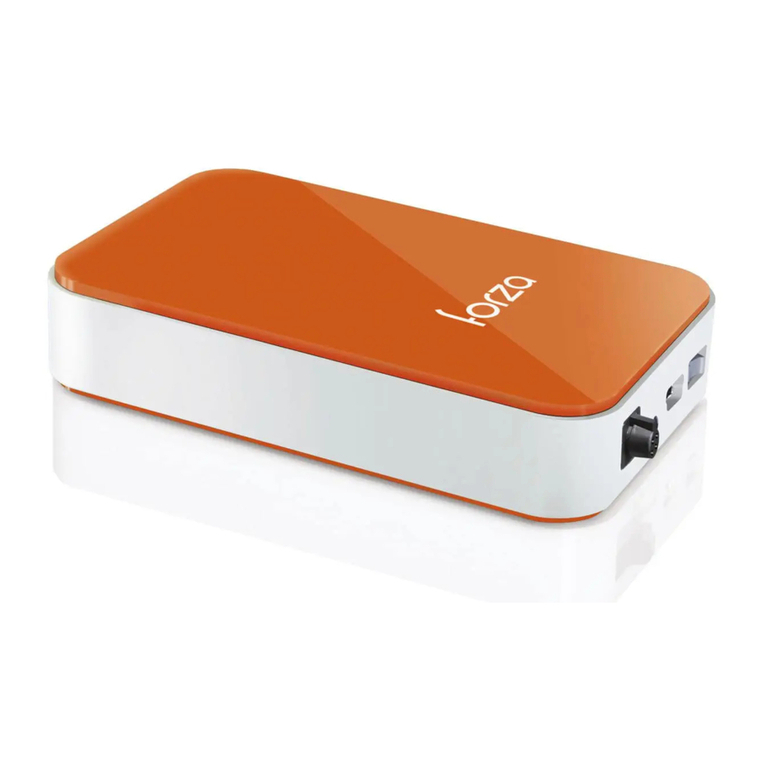
OT Bioelettronica
OT Bioelettronica FORZA User manual
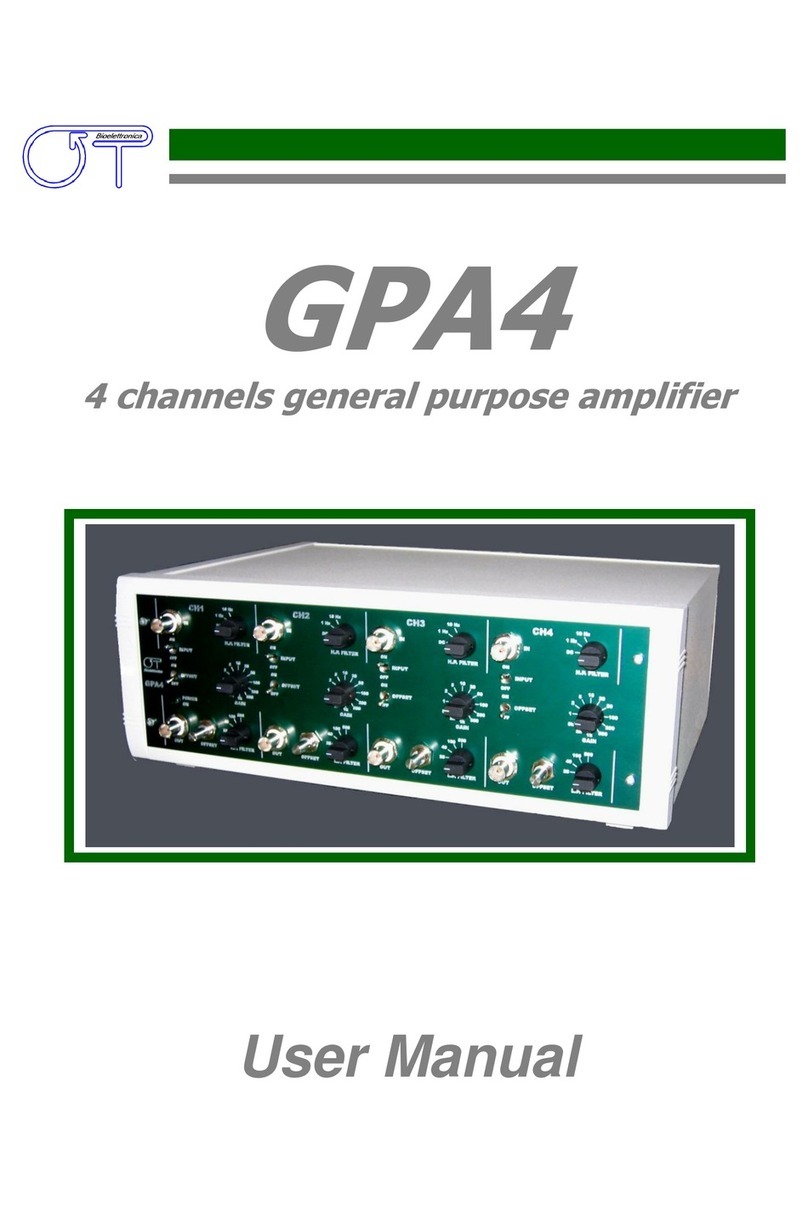
OT Bioelettronica
OT Bioelettronica GPA4 User manual

OT Bioelettronica
OT Bioelettronica Quattro User manual
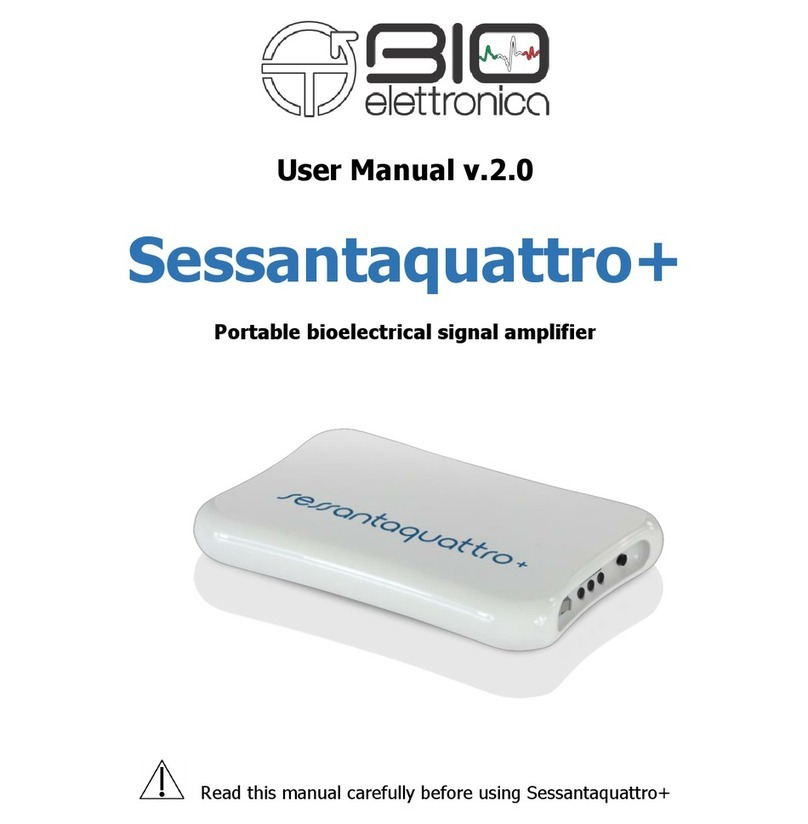
OT Bioelettronica
OT Bioelettronica Sessantaquattro+ User manual

OT Bioelettronica
OT Bioelettronica OT-BridgeAmp4 User manual
